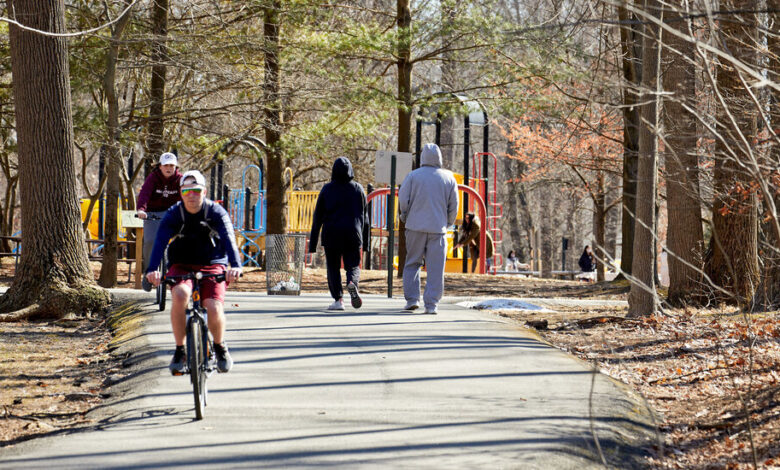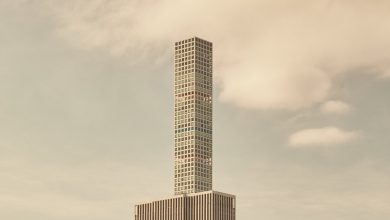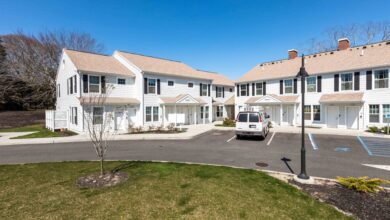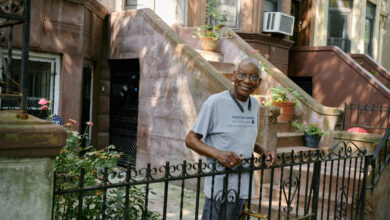Paramus, N.J.: Low Taxes and Lots of Shopping

For decades, shoppers from miles around have flocked to the mega malls and countless strip centers of Paramus, N.J., making the Bergen County borough a regional retail hub. But for the 26,000 residents who already live there, the best part about all those businesses is that they carry a lot of the property tax burden, giving homeowners a break.
“One of the main draws for Paramus buyers are the low taxes,” said Lisa Sammataro, a Keller Williams real estate agent in Ridgewood.
The tax rates were part of the reason that Vincent Giordano, 37, a mortgage broker, and his wife, Jayme, 34, a former music teacher, bought a house in Paramus in 2017, a colonial for which they paid $645,000. The couple, who grew up in northern New Jersey and now have three young children, were also looking for a suitable place to raise their family.
“When we looked at towns in the area, obviously we liked the low taxes in Paramus,” Mr. Giordano said. “And it seems to have good schools.”
Hoda Abdulla, 31, and Mehdi Ballouchy, 37, also had family in mind when they moved to Paramus in 2018, paying $711,000 for a 1960s split-level on a cul-de-sac. Ms. Abdulla, who works in digital marketing, and Mr. Ballouchy, a professional soccer coach, had lived in several places, including Vancouver, when Mr. Ballouchy played professionally. They loved city living, but began looking to suburbia after their daughter, now 4, was born.
“Once we had a child, we needed more space for her to play and explore,” Ms. Abdulla said. They chose Paramus in part because it felt more diverse than some other parts of Bergen County. Mr. Ballouchy was born in Morocco and Ms. Abdulla is of Egyptian descent, and “it was really important for us,” she said, that their daughter “didn’t feel she was different from her classmates.”
Last summer, distressed over the killing of George Floyd in Minneapolis, Ms. Abdulla launched a Facebook group called Progressive Paramus Women of Color and Allies; the group now has close to 300 members. “I feel pride in how we’ve all come together,” she said.
But this is a time of transition for Paramus, as its shopping centers compete not only with online retailers but also with American Dream, the massive new retail and entertainment center in nearby East Rutherford. At Paramus Park mall, a Sears was recently replaced by a Stew Leonard’s food store. And two Lord & Taylor department stores in Paramus closed when the chain went into bankruptcy; no decisions have been announced about what will replace them.
Seeing consumers’ interest in walkable communities, the borough’s largest mall, Westfield Garden State Plaza, has proposed replacing some of its parking lots with multifamily housing, restaurants, a hotel, offices and green space. And the borough is getting a major health care investment, with the construction of a 372-bed hospital by the Valley Hospital of Ridgewood. Richard LaBarbiera, Paramus’s mayor, said that some properties near the new hospital — including one of the empty Lord & Taylor stores — could be repurposed for medical use.
While Mr. LaBarbiera predicted that retail would remain strong in the borough, he added, “Paramus has always done a great job of adapting to market needs.”
What You’ll Find
Paramus, about 19 miles northwest of Times Square, covers 10.5 square miles and is mostly a single-family housing market, largely developed after World War II, when former celery and lettuce farms were blanketed with subdivisions of split-levels, ranches, Cape Cods and bi-levels.
In recent years, developers have razed many of those houses and replaced them with larger ones that sell for $1 million or more — like the one that Saleha Ahmed, 46, a hospital administrator, and Faiz Kareem, 48, a sales manager for a health maintenance organization, bought when they moved to Paramus from Teaneck in 2019 with their daughter, now 11. The couple were looking for new construction and a larger property.
The new colonial-style house they found on a quarter-acre lot cost $1.1 million. “We picked Paramus because we felt it was still close enough to the city, and diverse enough for us,” Ms. Ahmed said.
Developers often snap up lower-priced properties, said Rocio Hernandez, a Paramus resident and a real estate agent with Coldwell Banker, in Ridgewood. That means starter homes are scarce. And longtime homeowners tend to stay put, keeping housing inventory low. “You don’t want to move from the town because the taxes are so low,” Ms. Hernandez said.
What You’ll Pay
As of early April, the New Jersey Multiple Listing Service showed 24 homes on the market in Paramus, from a four-bedroom Cape Cod built in 1949, listed for $449,000, to an expanded six-bedroom split-level with an attached professional office, built in 1952 on an acre, listed for $2.25 million.
As the pandemic has made suburban living more attractive to many city dwellers, home prices and sales volume have risen over the past year, according to the multiple listing service. In the 12 months ending on March 15, 299 homes sold in Paramus, up 26 percent from the previous 12 months. Prices jumped 10 percent over the same period, to a median of $700,000.
The Vibe
Young families flock to the zoo and the train ride at Van Saun County Park, on the east side of the borough, while bikers, runners and walkers often favor the paths at Saddle River County Park, a linear park that runs north-south along the Saddle River through Paramus and five other areas.
Golfers have their choice of four courses between Route 17 and Paramus Road: the Paramus municipal course; the ones at Arcola Country Club and Ridgewood Country Club; and the nine-hole Orchard Hills course, on the grounds of Bergen Community College.
Paramus doesn’t have a walkable downtown; instead, residents shop, dine or go to the movies at the malls and in the pedestrian-friendly shopping districts of Ridgewood or Westwood.
Out-of-towners often get mired in the traffic created by the shopping centers, but locals seek out detours. “When you live in Paramus, you learn to travel the side streets,” Ms. Hernandez said.
Bergen County limits retail activity on Sundays, keeping many mall businesses closed. Over the years, proposals to change that have ignited strong opposition among Paramus residents who want a break from the traffic.
The Schools
About 3,800 students attend Paramus’s eight public schools — five elementary schools, two middle schools serving fifth through eighth grade, and Paramus High School. The schools’ population is about 53 percent white, 30 percent Asian, 13 percent Hispanic and 1.5 percent Black. Languages spoken at home include Spanish, Korean, Gujarati and Arabic.
On the 2018-19 SAT tests, Paramus High School students averaged 574 in reading and writing and 590 in math, compared with state averages of 539 and 541. About 90 percent of the class of 2019 continued on to college.
There are two religious secondary schools in the borough: Paramus Catholic High School, a coeducational school founded in 1965, and the Frisch School, a Modern Orthodox Jewish school founded in 1971.
The main campus of Bergen Community College, the largest community college in New Jersey, is in Paramus.
The Commute
Paramus is not on a train line, but several New Jersey Transit buses serve commuters. During peak travel times, Bus No. 165 runs express to the Port Authority Bus Terminal in Midtown Manhattan, a trip that takes about 50 minutes and costs $6 one way. At off-peak times, buses run through nearby areas into the city, a ride that takes around 90 minutes.
Privately run minibuses travel along Route 4 to the George Washington Bridge Bus Terminal, in Washington Heights.
Those who prefer to drive like Paramus’s location at the confluence of the Garden State Parkway, Route 4 and Route 17, which puts surrounding counties within commuting range. The drive to Midtown Manhattan takes about 30 minutes without traffic, but can be much longer at rush hour.
The History
The Bergen County Isolation Hospital opened in 1916 in Paramus to quarantine patients with polio, tuberculosis and other contagious diseases. Families were discouraged from visiting patients, a hardship that echoes in the age of Covid-19, more than a century later. The hospital’s name was later changed to Bergen Pines, in honor of the 1,000 pine trees donated to the campus by a Masonic lodge in Hackensack. The hospital, now known as Bergen New Bridge Medical Center, is still owned by Bergen County and is New Jersey’s largest public hospital, with more than 1,000 hospital and nursing-home beds.
For weekly email updates on residential real estate news, sign up here. Follow us on Twitter: @nytrealestate.






